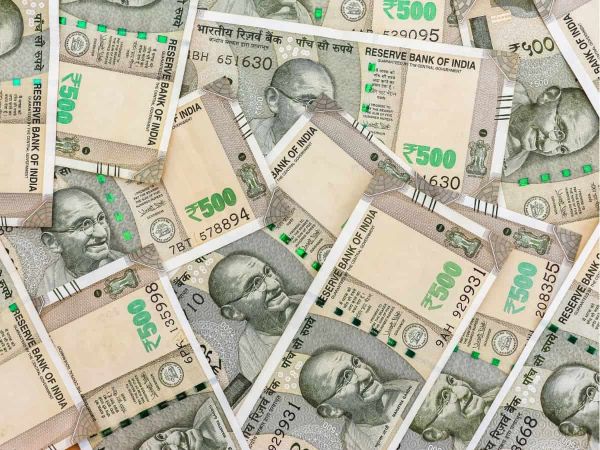
Since the US Preisdent Donald Trump imposed tariffs on Liberation Day, it has sparked a larger debate in countries like India on how dependent is India on external demand for sustainable growth.
The goods and services exports comprise about a fifth of the south Asian nation’s gross domestic product (GDP). Meanwhile, "the goods exports stood at US$437bn (13.2% of GDP) and services exports touched US$263bn (9% of GDP) in F2025," as per a Morgan Stanley report.
How Volatile Is India's Goods & Services Exports Market?
Goods exports have remained weak, growing a meagre 0.9% YoY in CYTD25 vs. 2.8% in CY24.
However, at the margin the trend has improved with exports growth at 9% in QE Sep-25 vs. -6.8% in QE Sep-24.
"The moderation is largely broad-based with continued contraction in oil exports (-18.1% in CYTD25 vs -16% in CY24) and somewhat weaker trend in non-oil exports (5.4% in CYTD25 vs. 7.7% in CY24). While electronic exports have been an outlier, growing 42.9%in CYTD25 vs. 28.4% in CY24, non-oil non-electronic exports remain lacklustre," it said.
Indeed, per data from IDC, Apple's quarterly shipments rose to an all-time high in QE Sep-25, as it touched 5 mn units. A sluggish trend in goods exports also corroborates the lacklustre trend in India's market share in global goods exports tracking at 1.9% vs. 1.7% pre-pandemic.
Key US Policy Changes & Its Impact On India
The 50% tariffs imposed on India, came into effect on August 27 and are higher than those on other competing nations. As such, they expose India to price disadvantages, making its exports less competitive relative to peers, especially for products with price elasticity greater than one, shifting demand to other
countries.
"To be sure, India’s direct exposure to the US in terms of goods exports remains low at US $86.5bn (2.2% of GDP) in F2025. Within the total basket of exports to the US, ~55% of exports are likely to be affected by the cumulative 50% tariffs, with the most pronounced implications for labour-intensive goods such as textiles and leather, and agri products such as marine products, as per the Morgan Stanley report.
Notably, ther has been a sequential decline in exports to the US has gained further pace, falling 20% MoM in September, vs. -14% in August, as tariffs hit.
Similarly, the segments affected by the tariffs with highest exposure to US markets are textiles, leather-related products, and gems & jewelry, which showed a moderation or decline in exports in September and August.
Nascent signs of export market diversification are evident as exports to Bangladesh, the UAE, HK, Saudi Arabia, and South Korea rose on a MoM basis in August/September.
Further, the depreciation of the rupee (CYTD REER has declined 8.7%) is likely to provide another offset.
Services exports exhibit some moderation in growth: Gross services exports remain largely stead,y growing at ~11% in CYTD25, similar to CY24. However, at the margin the pace of growth has moderated, tracking at 8.6% in QE Sep-25 vs. 12.3% in QE Sep-24. The slowdown in services exports is likely driven by weaker global growth and trade dynamics.
"The trend in net services trade surplus remains steady at 4.9% of GDP on a 12M trailing basis. On a four-quarter trailing basis, India's services export market share is tracking higher at 5.1% vs 3.6% in 2019," it said.
Recent changes in US immigration policy: Per its recent proclamation, the US government has raised the H-1B visa fee to US$100,000 for new visa applications, from its earlier range of US$1,500-4,000, so as to restrict the entry of non-immigrant workers.
India is the largest beneficiary of H-1B visas, accounting for 71% of the approved visas in 2024. The change does not affect existing visa holders or renewals, but could weigh heavily on Indian IT companies that depend on new on-site visas, as per the report.
Moreover, in October 2025, the US introduced the HIRE Act (Halting International Relocation of Employment), which aims at curbing outsourcing by American companies, by imposing a 25% excise tax on payments made to foreign firms for services consumed in America.
As a direct result of this, client costs could be inflated as much as 46% if the disallowance of deductions is factored in, significantly affecting revenue streams and operating margins.
Outlook: On the goods side, external demand remains contingent on the trend in global growth, which (per estimates from our global economics team) is likely to hold up (3.1% in 2026 and 3.3% in 2027).
In a similar vein, "we expect goods exports to largely maintain their current trend, though prolonged high tariff rates could negatively affect this stability," as per a Morgan Stanley's Asia-Pacific insight report.
“In our base case, we assume the negotiations on the bilateral India-US deal to be completed by 1Q26,” it said.
"On the services front, the trend in exports remains resilient. While we expect the momentum to be sustained in coming years, we remain watchful of potential headwinds from adverse US policies (such as the HIRE Act and increase in H1-B visa fees) and impact of AI and automation," the report stated.
-
Is there a silent rilvary between Mahira Khan and Saba Qamar?

-
Hyderabad food guide: 5 Punjabi dhabas serving desi comfort food

-
Men posing as govt officials intercept car, flee with Rs 7 Cr in Bengaluru

-
Nitish Kumar is leader of NDA in Bihar, submits resignation as CM

-
Alaska's Utqiagvik Enters Polar Night: 65 Days Without Sunlight
